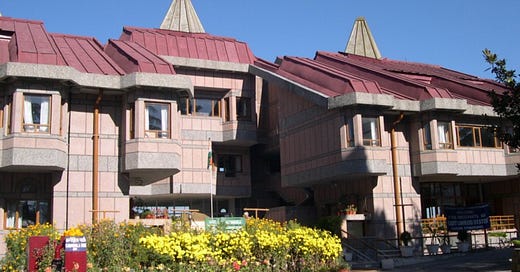IAS: No longer “I Am Supreme” in the States
Constraints of working in the field leave very little elbow space
Constraints of working in the field leave very little elbow space
It has become almost fashionable to refer to IAS officers, not as bureaucrats but pejoratively as “Babus”, dubbing them as jaded versions of the British-Raj ICS officers. Its supporters argue that with its merit-driven recruitment through the UPSC, the IAS has coped up admirably with the rapidly changing developmental priorities since Independence. Some analysts concede that while individually the IAS officers may be brilliant and intelligent folks but as a Service, the IAS has failed miserably to live up to the expectations of the people as well as the politicians. After the initial euphoria of cracking the competitive examination is over, the IAS gets nothing but flak with negative stories dominating the headlines. Conduct Rules do not permit a Civil Servant to rush to the press to give his side of the story. Similarly, the institutional constraints of the IAS have not been adequately chronicled so far.
Field Posting:
An IAS officer, after 2 years of rigorous training, is transplanted into the heart of India’s hinterland, getting the first posting as a Sub-Divisional Magistrate (SDM) at a sub-district level. From day one, he’s confronted with handling unlawful assemblies, natural calamities, apart from day-to-day functioning like Land Revenue, Administration, Municipal Affairs, Rural Development, Public Distribution System and the instantaneous local priorities, not to forget the conduct of elections at all levels from the Gram Panchayat to the Parliament. In about 6 to 8 years, he hopefully ends up in the position of Deputy Commissioner/District Magistrate/Collector, a position which has effectively remained synonymous with the IAS. Here he is supposed to be incharge of the Land Revenue Police/Magisterial and Development Projects of the district, in a scenario where to local MLAs and Ministers have become increasingly vocal, vociferous and assertive. He also needs to coax work out of to Panchayati Raj Institutions (PRIs) like Zila Parishads and Urban Local Bodies (ULBs), like Municipal Corporations and Councils, even though these are not directly under his control. The equation with the Police Administration remains uneasy, if not adversarial. Nevertheless, most of the Government of India’s schemes, whether in Social Sectors like School Education, Health, Nutrition, Child Rights etc. continue to rely on the District. A successful DM survives and thrives not merely because he has the unstinted support of the Political Executive but essentially because he is seen as a neutral umpire, who is capable of balancing out conflicting demands and divergent forces a fair, just and optimal manner.
Head of Department
In the 10–18 years of service, an IAS officer shifts to the role of a Head of the Department (HOD) at the state capital. He reports to a senior IAS colleague, who is the Secretary/Principal Secretary of the Department. Of course, there is a Minister-in-charge on top of the Secretary. In theory, the HOD domain is clear — he is responsible for the operational/implementation aspects to Department, whereas the policy is formulated by the Cabinet. He generally has no role to play in the recruitment of the staff although he may exercise disciplinary powers over the lower, non-Gazetted officials. The ubiquitous powers of transfer, even where the HOD is the appointing authority, are usually within the domain of the Minister. He has to contend with political forces right from the village-level issues, through district-level problems, right up to interference in the internal administration of his own office. The support that he may get from his IAS boss is, at best, average since the latter is working under his own constraints.
Administrative Secretary
IAS officer reaches the middlescence plateau when he is elevated at the level of an Administrative Secretary in about 16–18 years, where he is likely to remain for the remaining period of career/service, unless he is rises to occupy the coveted post of the Chief Secretary. The tags may change and the salary may go up: but the pith of the work remains the same. One does not have any worthwhile independent or statutory powers and one is merely advising the Minister, who has the last word in all administrative matters. Yes, there are provisions, wherein case of difference of opinion with the Minister, an Administrative Secretary can submit the file through the Chief Secretary to the Chief Minister for final decision, whose decision is, of course, be final. However, scarcely any Administrative Secretary would do so frequently lest he be written-off as cantankerous.
An IAS officer is like Formual-1 driver who are asked to drive a second-hand Maruti-800 car on a rugged village road, with multiple backseat drivers, and yet expected to perform like a racing professional. He is expected to follow archaic rules which are “more honoured in breach than in observance.” Let us at least appreciate the constraints under which these officers work in the States before be condemn the entire service as haughty, corrupt and inefficient.




